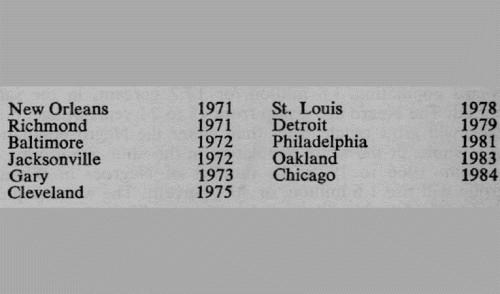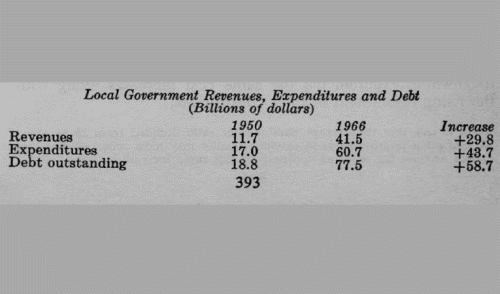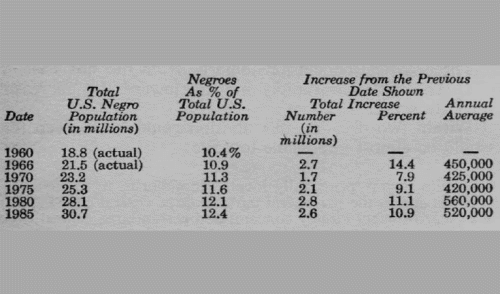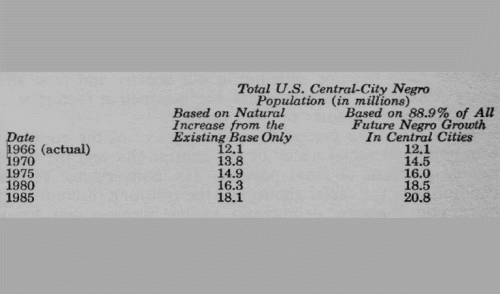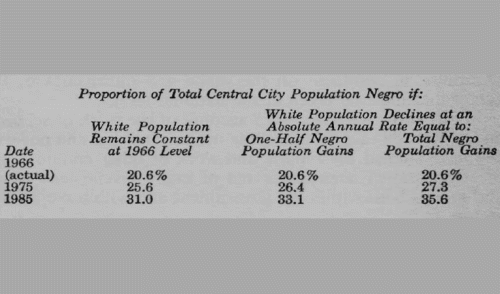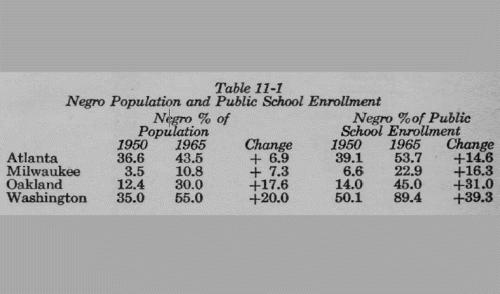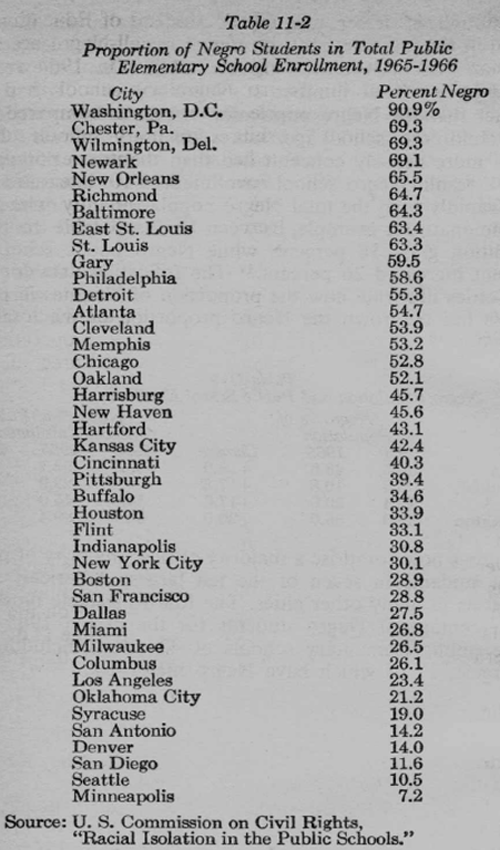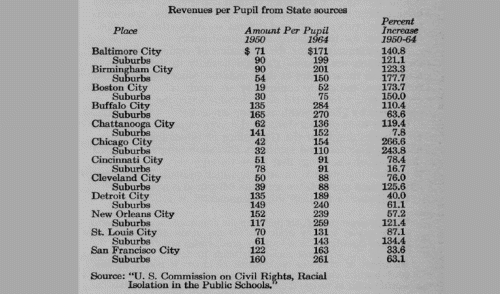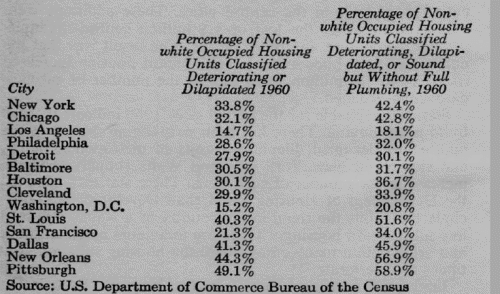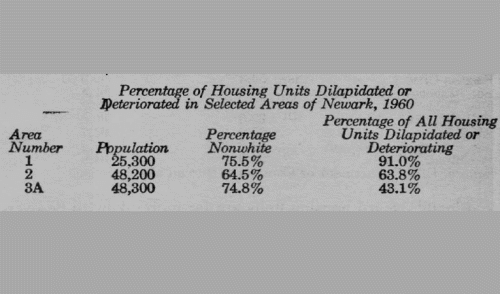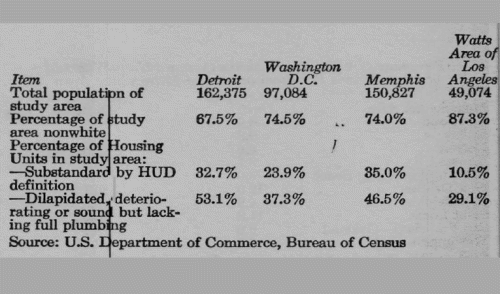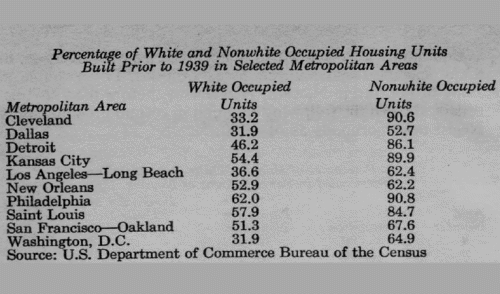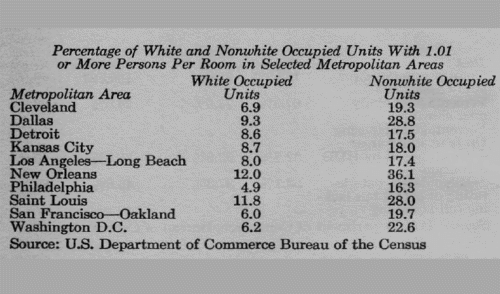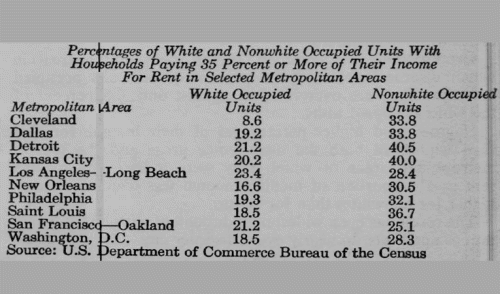INTRODUCTION
To analyze the complex social causes of disorder, to plumb the impact of generations of deprivation, to work for broad and sensitive efforts at prevention are vital tasks, but they are slow and difficult. When, in the meantime, civil disorder breaks out, three simpler principles emerge.
First: Preserving civil peace is the first responsibility of government.
Individuals cannot be permitted to endanger the public peace and safety and public officials have a duty to make it clear that all just and necessary means to protect both will be used. Our society is founded on the rule of law. That rule must prevail; without it, we will lack not only order but the environment essential to social and economic progress.
Second: In maintaining the rule of law, we must be careful not to sacrifice it in the name of order.
In our concern over civil disorder we must not mistake lawful protest for illegal activities. The guardians of the law are also subject to the law they serve. As the FBI states in its riot manual for law enforcement officers:
A peaceful or lawful demonstration should not be looked upon with disapproval by a police agency; rather, it should be considered as a safety valve possibly serving to prevent a riot. The police agency should not countenance violations of law. However, a police agency does not have the right to deny the demonstrator his constitutional rights.
Third: Maintaining civil order is the responsibility of the entire community.
Not even the most professional and devoted law enforcement agency alone can quell civil disorder any more than it alone can prevent civil disorder. A thin blue line is too thin. Maintaining civil peace is the responsibility of the entire community, particularly public officials. The guidance, assistance, and support of the mayor can be decisive.
This does not deny the very great responsibility which is and should be borne by the police. In the Supplement on Control of Disorder we offer specific comments which we hope will help law enforcement agencies regain control after major disorders have developed. In this chapter, however, the Commission considers ways by which the police -- with the leadership and support of the civil authorities -- can suppress and restrain potentially major disorders in their initial phases. [1]
I. THE INITIAL INCIDENT
Last summer more than fifty cities experienced some form of civil disorder. Most remained minor disturbances, effectively controlled by the local police and civil authorities. In some cities similar incidents led to serious disorder. Why?
Testimony and evidence studied by the Commission point to the preeminent role of police reaction to the initial incident. How the police and the community respond to and deal with such incidents may well determine whether they remain relatively minor police problems -- or balloon into major disorders.
Initial Police Response
When police receive word of an accident, fight, or similar incident, a patrolman is routinely sent to the scene. He is called on to exercise technical and professional skills at which he is practiced-investigation, individual control and perhaps arrest. Infrequently, he may have to call for assistance. In any event, his judgments, while important, normally have an impact only on the immediate participants.
In the densely populated ghetto, however, particularly when summer heat drives many residents into the streets, even the most routine incident may call for far more than a technical assessment. The responding officer's initial judgment here is critical in two respects. First, it will guide his own conduct. Second, it will guide the response of his superiors. What orders, if any, should they give him? What help should they send if he asks for help? An assessment of this sort may be difficult for the best-informed officer. What makes it even more difficult is that police often do not know what to expect when they respond to incidents in ghetto areas where virtually all the 1967 disorders occurred.
The average police officer has little knowledge of understanding of the underlying tensions and grievances that exist in the ghetto. Yet this information is vital if the police officer is to decide correctly what police or other control measures should be taken to deal with the incident. The task is to find ways to inform his judgment to the maximum extent possible.
To institutionalize good judgment is never easy, and may not be possible at all. Some broad considerations, however, can be offered
The Basic Factors
Five factors, often inseparable, recurred in the major disorders of last summer: (1) crowded ghetto living conditions, worsened by summer heat; (2) youth on the streets; (3) hostility to police; (4) delay in appropriate police response; and (5) persistent rumor and inadequate information.
On hot summer nights, the front steps and the street become a refuge from the stifling tenements of the ghetto. Detroit's 12th Street, New Haven's Congress Street, and the grim public housing blocks of Newark illustrate how ghetto streets come alive with people, especially on summer nights and weekends -- when many of the disorders of 1967 began. That the people on the streets include a very high proportion of youth merely reflects the fact that there are many young people in ghetto populations.
It takes little to attract a crowd in this setting. Stopping a car for speeding may be routine and go unnoticed in most areas. In the ghetto, it can draw a crowd instantly -- quick to misunderstand, quick to characterize the police action as unfair, quick to abandon curiosity for anger.
Crowded ghetto living conditions and youth on the streets -- the first two factors -- cannot be remedied by the police. But the police must take these conditions into account in assessing even the most routine ghetto incident. Every police officer responding to a call in tense, heavily-populated areas must be aware of the background. Here more than in any other type of police duty, the individual officer must exercise good judgment and common sense. The Chicago Police Department issued the following training bulletin to all its personnel:
Preventing civil disorders is always easier than suppressing them. The police officer, by disciplining his emotions, recognizing the rights of all citizens, and conducting himself in the manner his office demands can do much to prevent a tension situation from erupting into a serious disturbance. [2]
There are, however, steps police can take to eliminate or minimize the effects of the remaining three factors.
In the preceding chapter, we have already discussed the factor of hostility to police.
As to delay, sufficient manpower is a prerequisite for controlling potentially dangerous crowds; the speed with which it arrives may well determine whether the situation can be controlled. In the summer of 1967 we believe that delay in mobilizing help permitted several incidents to develop into dangerous disorders, in the end requiring far more personnel and creating increased hazards to life and property.
Rumors significantly aggravated tension and disorder in more than 65 percent of the disorders studied by the Commission. Sometimes, as in Tampa and New Haven, rumor served as the spark which turned an incident into a civil disorder. Elsewhere, notably Detroit and Newark, even where they were not precipitating or motivating factors, inflaming rumors made the job of police and community leaders far more difficult.
Experience also has shown that the harmful effect of rumors can be offset it police, public officials, and community leaders quickly and effectively circulate the facts. The Commission recommends that loudspeakers should be available to police at the scene of an incident. Radio and television announcements and special telephone networks to reach many neighborhood residents have been effective.
An innovative method is that of a "Rumor Central" -- an office responsible for the collection, evaluation, and countering of rumors which could lead to civil disorder. [3] To be most effective, such units might be located outside police departments. In any event, they should work closely with police and other officials.
II. CONTROL CAPABILITIES
Whenever an initial incident erupts into a major crowd control problem, most police departments are confronted with a difficult manpower problem. A police department normally has only about 13 percent of its uniformed force on duty during the 4 p.m. to midnight watch, when 86 percent of all the riots studied by the Commission began. For example, a city like Cincinnati, with a population of about 500,000 and an area of 77 square miles, would have only some 95 uniformed policemen available if trouble should break out during those hours. A city like Peoria, Illinois, with a population of about 100,000, would have less than 25 uniformed patrolmen on hand. [4]
Dispersal is also a factor. Normal police operations require personnel to be distributed over the entire geographical area of a city. When disorder breaks out, the task of mobilizing all available manpower is enormous. The police administrator must weigh the need for police to control the riot against the risks of leaving vital areas of the• city without police protection.
It is apparent that most American cities would not have enough policemen quickly available to assure control in the event of a sudden large disorder. A high premium must hence be placed on the capability to prevent disorders -- or to contain them before they develop into serious proportions.
Training
Despite the obvious importance of well-trained police in controlling disorder, the Commission survey of the capabilities of selected police departments disclosed serious deficiencies. For example, riot-control training is usually given only to recruits. This averaged 18 hours for the departments surveyed, ranging from 62 hours to only two. Almost no training is provided for command-level officers. By contrast, the National Guard now receives a minimum of 32 hours of riot control training under new U.S. Army regulations and National Guard officers receive 16 hours of command training for disorder situations.
The deficiencies in police training for disorders are magnified by the fact that standard police training and operations differ radically from training needed for the control of riots. Traditional training and emphasis have been on the individual policeman. His routine duties involve isolated incidents and dealings with small numbers of people at one time. The nature of his work -- riding or walking mostly alone or in pairs -- means that he has considerable individual discretion.
The control of civil disturbances, on the other hand, requires large numbers of disciplined personnel, comparable to soldiers in a military unit, organized and trained to work as a team under a highly unified command and control system. Thus . when a civil disturbance occurs, a police department must suddenly shift into a new type of organization with different operational procedures. The individual officer must stop acting independently and begin to perform as a member of a closely supervised, disciplined team. Our survey disclosed that training in practically all departments is limited to the individual.
Last year's disorders demonstrated that the control problems encountered were different even from those for which riot-control training had been designed. Violence often involved small groups and hit-and-run tactics. Except in the later stages of the largest disorders, the crowds included large numbers of spectators not active in looting or destruction. Since they were mostly residents of the area, dispersal alone was futile. As a result, training in conventional riot-control methods was often inapplicable and ineffective.
Few departments have the resources and expertise to provide adequate and relevant training for control of serious disorders. We discuss this problem in greater detail in our Supplement on the Control of Disorder, together with our recommendations.
Discipline and Command
As the Riot Profiles in the opening chapter of the Report have shown, discipline of the control force is a crucial factor. Officers at the scene of a ghetto disorder are likely to suffer vilification and even injury from rocks or bottles. Nevertheless, police discipline must be sufficiently strong so that an individual officer is not provoked into unilateral action. He must develop sufficient confidence in himself and his fellow officers to avoid panic or the indiscriminate -- and inflammatory -- use of force that has sometimes occurred in the heat of disorders. Discipline of this sort depends on the leadership of seasoned commanders and the presence in the field of sufficient supervisory officers to make major decisions.
The ability of police commanders to maintain command and control of units at the scene of disorder is severely handicapped by deficiencies in police communications. Police departments usually can communicate with their personnel only through radios in police vehicles. Once the officer leaves his police car or motorcycle, he loses communication with his superiors and is outside their effective control.
The military has field communications systems which make it possible to achieve effective command and control. The nation's police departments do not. A more complete discussion of this problem and the Commission's recommendations are contained in the Supplement.
Police Tactics
There are no all-purpose control tactics. Last summer's disorders demonstrated repeatedly that tactics which are effective in one situation may be totally ineffective in another. The cardinal requirement is to have enough men available to put into effect whatever tactics are used.
Tactical operations are dealt with in the Supplement. Specific riot control tactics are discussed in the Model Operations Plan, described in the Supplement, which has been prepared for separate distribution to police departments.
III. THE USE OF FORCE
Justification of Deadly Force
There are at least three serious problems involved in the use of deadly weapons in a civil disorder. The first is the risk of killing or wounding innocent persons -- bystanders or passersby who may in fact be hundreds of feet away when a shot is fired.
The second is the justification for the use of deadly force against crimes like looting. There is a question whether bullets are the correct response to offenses of this sort against property. Major General George Gelston5 told the Commission: "... I am not going to order a man killed for stealing a six- pack of beer or a television set." Instead, be said, a nonlethal tear gas can stop any looting.
The third problem is that the use of excessive force -- even the inappropriate display of weapons -- may be inflammatory and lead to even worse disorder. As the FBI riot control manual states:
The basic role, when applying force, is to use only the minimum force necessary to effectively control the situation. Unwarranted application of force will incite the mob to further violence, as well as kindle seeds of resentment for police that, in turn, could cause a riot to recur. Ill-advised or excessive application of force will not only result in charges of police brutality, but also may prolong the disturbance.
Such counsel with respect to disorders accords with the clearly established legal and social principles of minimum use of force by police.
The major difficulty in dealing with all these problems, however, is the limited choice still presented to police in mass disorders: to use too much force or too little. The police who were faced with the New York riot of 1963 were equipped with two weapons -- a wooden stick and a gun. For the most part, the police faced with urban disorders last summer had to rely on two weapons -- a wooden stick and a gun.
Our police departments today require a middle range of physical force with which to restrain and control both more humanely and more effectively.
Alternatives to Deadly Force
The dilemma regarding force has endured for more than a century for two reasons. One is that police are inhibited from using even the new tools which have been developed. The second is that the improvement and perfection of these tools is proceeding far too slowly.
As pointed out in the Supplement, fear of public reaction and other policy considerations have tended to inhibit police use of nonlethal chemical agents in civil disorders. The U.S. Army, on the other hand, relies heavily on the use of CS, a chemical agent for controlling riots. The Army has found it to be both much more effective and safer than the more traditional tear gas, CN. The use of CS is prescribed in the standard military sequence of force prior to the employment of any lethal firearms. Moreover, new developments now make it possible to use chemical agents selectively against individuals and small groups with minimum danger to innocent persons. Thus the understandable concern of many police and public officials as to the wisdom of using massive amounts of gas in densely populated areas need no longer prove a barrier.
The value and effectiveness of chemical agents in restoring law and order, with minimum danger to lives and property, is also attested by the FBI's riot control manual: "Chemical agents ... can negate the numerical superiority the mob has over the police force. They are the most effective and most humane means of achieving temporary, neutralization of a mob with a minimum of personal injury."
The Commission recommends that in suppressing disorder, the police, whenever possible, follow the example of the U.S. Army in requiring the use of chemical agents before the use of deadly weapons.
The experience of many police forces has demonstrated, however, that the value and community acceptance of new nonlethal methods may be jeopardized if police officers employ them in an indiscriminate way. In some of the cities we studied, reports of improper use of some chemical weapons by individual police officers have led to charges that these weapons are brutalizing or demeaning. To assure public confidence and prevent misuse, police administrators should issue clear guidelines on where and how police may employ such control measures.
The Commission has received many suggestions for other nonlethal control equipment. Distinctive marking dyes or odors and the filming of rioters have been recommended both to deter and positively identify persons guilty of illegal acts. Sticky tapes, adhesive blobs, and liquid foam are advocated to immobilize or block rioters. Intensely bright lights and loud distressing sounds capable of creating temporary disability may prove to be useful. Technology will provide still other tools.
There is need for additional experience and evaluation before the police and the public can be reasonably assured that these control innovations meet the performance and safety standards required for use in the community. The Commission believes, however, that the urgent need for nonlethal alternatives requires immediate attention and federal support. We discuss this further in the Supplement.
IV. COMMUNITY ASSISTANCE IN DISORDER CONTROL
Commission studies have shown that in a number of instances both police and other responsible civil authorities were forced to make decisions without adequate facts in an atmosphere charged by rumor.
Police administrators consulted by the Commission emphasized the importance of employing trained police intelligence officers to collect, evaluate and disseminate information. The use of undercover police officers, reliable informants and the assignment of police personnel to provide fast, accurate, on-the-scene reports were all cited as essential.
During the early stage of a disorder when lawlessness is still relatively restricted, the cooperation and assistance of Negro leaders and other community residents with a common interest in the maintenance of order can be extremely valuable. They can provide the police with the kind of pertinent, reliable information essential for decision-making during the disorder. Many agencies and organizations in the area, public and private, have valuable contacts and channels of communication. These also can serve as important information resources.
In some cities, "counter-rioters" have played an important role in dampening disturbance. Volunteers have assisted in restoring order by patrolling their neighborhoods and trying independently to persuade others to go borne. Sometimes local authorities have actively recruited ghetto residents to perform these missions. The Commission believes that mayors and police chiefs should recognize and assess carefully the potential benefit such efforts can sometimes provide, restoring the peace in a way that will earn public support and confidence.
The larger question, however -- whether police should withdraw from the disorder area and let the community leaders or forces seek to cool the rioting -- raises a number of critical issues. The first and most important is whether by so doing the police are abdicating their basic responsibility to maintain order and protect lives and property.
Some police administrators are deeply convinced that it is a dereliction of duty for police to delegate complete authority to individuals or groups who lack legal responsibility. In their judgment, such actions creates the danger of vigilante groups.
The Commission shares this concern; a sanctioned control group could use its position to intimidate or terrorize. Those who come forward to discourage rioting may have no influence with the rioters. They may in the final event be ineffective. If they fail, they may well blame officials, creating new enforcement problems.
The Commission believes that only the mayor -- who has the ultimate responsibility for the welfare and safety of the community -- can, with the advice of the police administrator, make the critical judgment.
The Role of Public Officials
The Commission believes incidents are less likely to escalate into larger violence if ghetto residents know they have effective political channels of protest. We discussed formal grievance outlets at length in the preceding chapters. Here we are particularly concerned with the role of the mayor or city manager or police chief.
Civil disorders are fundamental governmental problems, not simply police matters. As the chief elected official, the mayor must take ultimate responsibility for all governmental action in times of disorder. To make this meaningful, he must have the corresponding authority and control. He must become fully involved in disorder planning and operations. He must understand the nature of the problems posed by a disorder, the strategy of response and the pattern of field operations.
In some cities, mayors have taken the view that disorders were entirely police matters. This represents a failure to accept a fundamental responsibility. The unwillingness of a mayor to become personally involved and negotiate grievances with local residents may cut off a vital outlet for peaceful protest.
Similarly, police chiefs should understand this responsibility and involve the mayor in their planning activities and operations. Only regular participation by the mayor in police problems, in cold winters as well as hot summers, will educate both the mayor and the police to the mutually reinforcing nature of their relationship.
Parallel responsibilities exist at the state level. Governors and other civilian officials with responsibility over state law enforcement activities, such as attorneys general, have an obligation to supervise planning and operations for civil disorders.
One of the most important responsibilities of local and state executives is to maintain close personal contact with the ghetto. The importance of creating channels of communication with ministers, with community organizations, with Negro leaders including young activists and militants cannot be overestimated. Given such contacts, officials become more sensitive to ghetto reactions to particular episodes and frictions. They also create acquaintanceships which can be used to help alleviate tensions that might otherwise heighten.
As the Riot Profiles indicate, in a number of the disorders studied by the Commission, efforts were made to respond to grievances. In some instances, Negro leaders took the initiative. In others, mayors and state officials did so. In New Brunswick, for example, discussion alleviated tension and led to a peaceful settlement. Often the determination of civilian officials, especially the mayor, to seek out these opportunities may be decisive in avoiding a major confrontation.
Having determined that it will try to resolve its problems by political means, the city must then decide the immensely difficult question with whom to negotiate. Large meetings open to the general public or small meetings limited to established, older Negro leaders are rarely effective. City officials are often faced with a fragmented Negro community. If they have failed to keep open broad channels of communication, city officials will have great difficulty identifying leaders with sufficient influence to get through to those on the streets.
Even after contacts are made, negotiations may be extremely difficult. Younger, militant leaders are often distrustful of city government, fearful of compromising their militancy or their leadership by allying themselves too closely with "the power structure," particularly when that structure may have nothing to deliver.
Civil disorders require the maximum coordination of the activities of all governmental agencies. Such cooperation can only be brought about by the chief executive. Examples are joint operations by the police and fire departments, mutual assistance agreements with neighboring communities, and state and federal assistance. These problems are discussed in the Supplement.
V. DANGER OF OVERREACTION
Emergencies are anticipated in police planning. They range from natural threats like floods and storms to man-made incidents like the recent disorders. Until 1964, most civil disorders were regarded as difficult but basically manageable police problems of an essentially local nature. The events of the last few summers, however, particularly the events of 1967, have radically changed this view. Disturbances in densely populated, predominantly Negro areas which might earlier have been labelled brawls became characterized as "riots," with racial overtones. A national climate of tension and fear developed, particularly in cities with large Negro populations.
Were relatively minor incidents inflated or escalated into serious disturbances? Did such inflation result from overly aggressive law enforcement action? Did it stem from unwarranted fears on the part of the ghetto community? Precise answers are impossible. What can be said, however, is that there was widespread misunderstanding and exaggeration of what did occur.
The most notable example is the belief widely held across the country last summer that riot cities were paralyzed by sniper fire. Of 23 cities surveyed by the Commission, there had been reports of sniping in 14. What is probable, although we could not secure firm evidence, is that there was at least some sniping. What is certain is that the amount of sniping attributed to rioters -- by law enforcement officials as well as the press -- was highly exaggerated.
According to the best information available to the Commission, most reported sniping incidents were demonstrated to be gunfire by either police or National Guardsmen.
The climate of fear and expectation of violence created by such exaggerated, sometimes totally erroneous, reports demonstrates the serious risks of overreaction and excessive use of force. In particular, the Commission is deeply concerned that, in their anxiety to control disorders, some law enforcement agencies may resort to indiscriminate, repressive use of force against wholly innocent elements of the Negro community. The injustice of such conduct -- and its abrasive effects -- would be incalculable.
Elected officials, police and National Guard officials must take effective steps to prevent false assessments and the tragic consequences that could follow. This will require improved communications. It will require reliable intelligence about ghetto problems and incidents. It will require, equally, assurance of steadfast discipline among control personnel.
VI. FUNDING OF RECOMMENDATIONS
Many of the recommendations in this and the preceding chapter will be costly. Studies of police practices, intensified recruitment of Negro officers, increased planning and training for disorder control -- all would impose heavy financial burdens on communities already hard-pressed by the increasing costs of their present systems of criminal justice.
The Commission recommends that the federal government bear a part of this burden.
Federal funding need not and should not in any way infringe on the principle of local law enforcement authority. The federal government already finances a variety of law enforcement assistance programs without such infringement. The Department of Justice provides direct grants for research planning and demonstration through the Office of Law Enforcement Assistance, and the FBI conducts training programs for state and local police officers. The Department of Health, Education and Welfare administers juvenile delinquency control programs and educational grants for law enforcement studies. The Department of Labor helps pay for Police Cadet Training programs. The Office of Economic Opportunity assists in police-community relations activities. We commend and endorse these efforts. But we believe more federal financial assistance is needed.
Such assistance should take two forms. First, in this chapter, the preceding one, and in the Supplement, we specifically recommend federal funding for certain programs -- community service officers, development of portable communications equipment, a national clearing house for training information, and nonlethal weapons development.
Second, we also believe that more federal support is necessary to help local communities improve the overall quality of their criminal justice systems. With the Crime Commission, we believe that the federal government "... can make a dramatic new contribution to the national effort against crime by greatly expanding its support of the agencies of justice in the states and in the cities."
These remarks are in no way intended to excuse local governments from their financial responsibilities. Improved law enforcement at the local level, including increased capacity to prevent and control civil disorders, is possible only if local citizens are willing to put their tax money where their desires are. But this Commission believes that not even the most devoted and willing community can succeed acting alone. Only the federal government is in a position to provide expertise, to draw lessons from many individual test programs, to pay for the large capital investment necessary for experimental programs or development of new equipment.
The Crime Commission outlined a broad program of federal funds, advice, and assistance to meet major criminal justice needs. It estimated that in the next decade, several hundred million dollars could be profitably spent each year on this program. The increased demands imposed on law enforcement agencies by the recent disorders have intensified the urgency and increased the cost of such a program.
Nevertheless, 14 months have now passed since the Crime Commission's exhaustive study and recommendations; 13 months have passed since the President first urged the Congress to enact such a program; that urgent request was renewed by the President in his Public Safety Message of February 7, 1968. No final action has yet been taken. It should be taken -- and taken promptly. Because law enforcement is a local responsibility, whatever legislation is adopted should permit direct grants to municipal governments. Funding should be at least as high as that requested by the President in his Message.
______________
Notes:
1. In arriving at these assessments and recommendations, the Commission flu relied heavily on information supplied by the many police, military and other leading authorities who were consulted. In addition to the studies conducted for the Commission by the International Association of Chiefs of Police, a number of outstanding authorities worked closely with the Commission staff and provided invaluable assistance. In particular, we wish to thank John Ingersoll, Chief of Police of Charlotte, North Carolina, and former Director of Field Services of the International Association of Chiefs of Police; Daryl F. Gates, Deputy Chief of Police, Los Angeles Police Department, who was one of the commanders in the field during the Watts riot; and Major General George M. Gelston, Adjutant General of Maryland and former Police Commissioner of Baltimore.
In addition to the testimony and reports received on the cities studied by the Commission and which had experienced disorders, the Commission drew upon the valuable information and material furnished by the Boston, Chicago, Cincinnati, Kansas City, Los Angeles, New York City and Oakland Police Departments. Valuable guidance also was provided by Colonel Orlando W. Wilson, until recently Superintendent of Police of Chicago and formerly Dean of the School of Criminology, University of California.
The Commission also was markedly assisted by material made available by the Federal Bureau of Investigation, and its brochure, "The Prevention and Control of Mobs and Riots;" related reports by the Crime Commission; and Information supplied by the Office of Public Safety, Agency for International Development. The Commission also received the active cooperation and assistance of the Department of Defense and in particular from the special task force established in the Office of Chief of Operations to study and make recommendations relative to the role of the Army and National Guard In controlling civil disorders.
2. Training Bulletin -- Tension Situations, 24 April, 1967, The Chicago Police Department.
3. The "Rumor Central" unit In Chicago, established In the Commission on Human Relations, is discussed in the Supplement on Control of Disorder.
4. The majority of American cities between 50,000 and 100,000 population have less than 100 policemen. Of those with over 100,000population, 71 percent have less than 500 policemen. Only 19 cities have more than 1000. As suggested by the cited figure of 13 percent manpower available, these figures are deceptively reassuring. Considering three shifts, days off, vacations and sick leave, five men are required to keep one police post manned 24 hours a day. In addition, manpower for regular police services like administration, records and detective work must be taken into account.
5. Adjutant General of Maryland, commander of National Guard forces in Cambridge, Maryland last summer, and former Police Commissioner of Baltimore.

